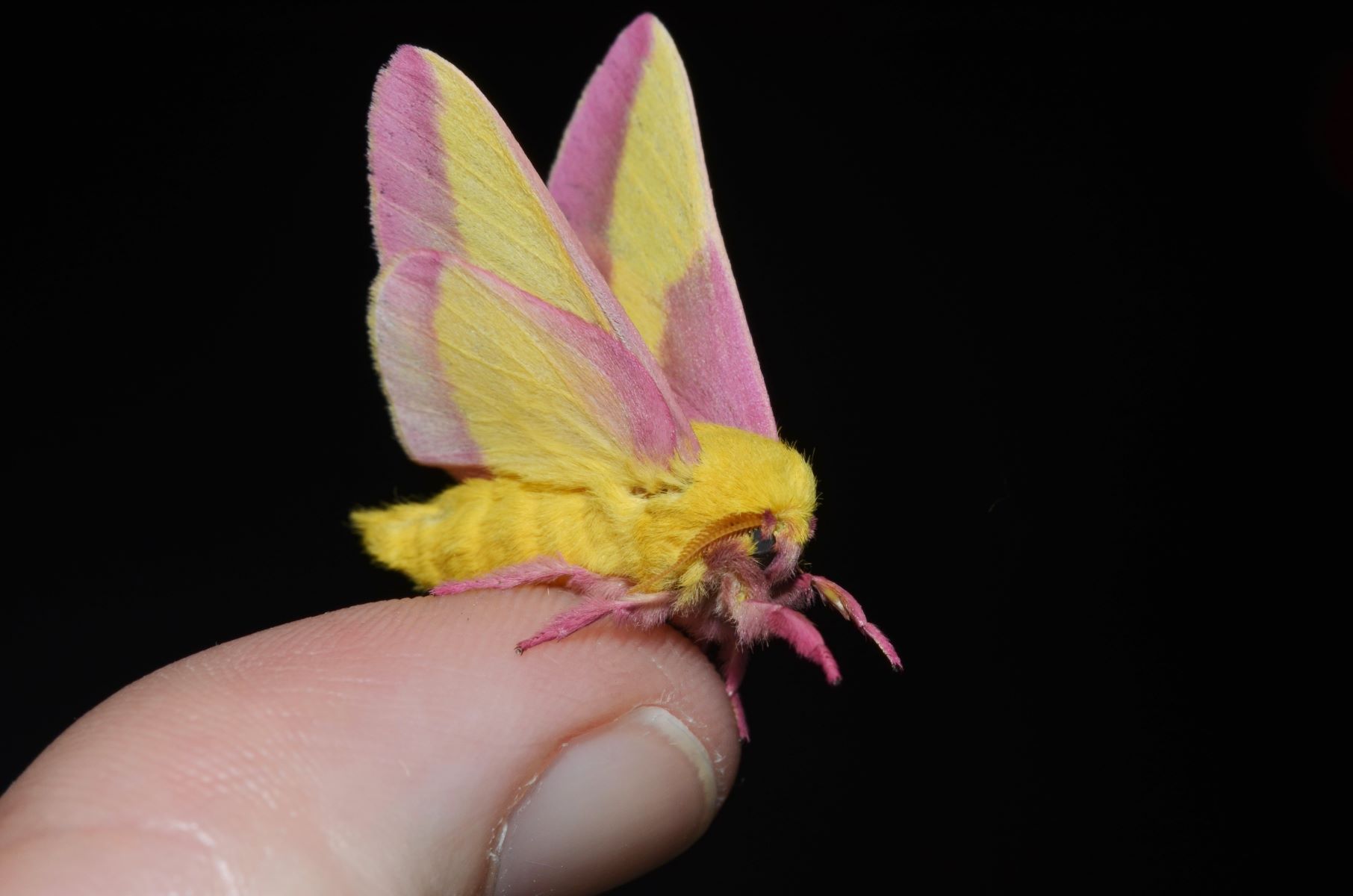
Have you ever seen a moth that looks like it flew out of a fairy tale? Meet the Rosy Maple Moth, a creature that’s as colorful as it is fascinating. With its bright pink and yellow wings, this moth stands out in the insect world. But there's more to this beauty than just its looks. Did you know that the Rosy Maple Moth is nocturnal and loves maple trees? Or that its scientific name is Dryocampa rubicunda? In this post, we’ll share 25 amazing facts about this unique moth. Get ready to be amazed by the Rosy Maple Moth’s vibrant life!
Key Takeaways:
- The Rosy Maple Moth, with its vibrant pink and yellow colors, is a small, fascinating creature found in North American forests. Its short lifespan, unique defense mechanisms, and attraction to light make it a captivating subject for nature enthusiasts.
- Rosy Maple Moths play an important role in forest ecosystems and have cultural significance. Their striking appearance, mating rituals, and temperature-sensitive coloration make them a symbol of beauty and ephemerality in the natural world.
What is a Rosy Maple Moth?
The Rosy Maple Moth is a small, colorful moth known for its striking pink and yellow coloration. These moths are native to North America and are often found in deciduous forests. Let's dive into some fascinating facts about this unique creature.
-
Scientific Name: The Rosy Maple Moth's scientific name is Dryocampa rubicunda. This name reflects its vibrant appearance and its association with maple trees.
-
Size: These moths are relatively small, with a wingspan ranging from 1.25 to 2 inches. Despite their size, their bright colors make them easy to spot.
-
Lifespan: The adult Rosy Maple Moth lives for only about two to nine days. Their short lifespan is typical for moths, focusing on reproduction.
-
Diet: As caterpillars, they feed on the leaves of maple trees, particularly red and silver maples. Adult moths do not eat; they rely on the energy stored from their larval stage.
-
Habitat: They are commonly found in deciduous forests across the eastern United States and parts of Canada. They prefer areas with abundant maple trees.
Unique Characteristics of Rosy Maple Moths
These moths have several unique traits that set them apart from other moth species. Here are some of the most interesting characteristics.
-
Coloration: Their pink and yellow coloration is not just for show. It helps them blend in with the flowers and leaves, providing camouflage from predators.
-
Antennae: Male Rosy Maple Moths have feathery antennae, which they use to detect pheromones released by females. This helps them locate mates.
-
Nocturnal: These moths are primarily nocturnal, meaning they are most active at night. They are attracted to light, which is why you might find them near porch lights.
-
Metamorphosis: Like all moths, they undergo complete metamorphosis, transitioning from egg to larva (caterpillar), then pupa (cocoon), and finally to adult moth.
-
Defense Mechanisms: When threatened, the caterpillars can regurgitate a foul-tasting liquid to deter predators. This is a common defense mechanism among many caterpillar species.
Reproduction and Lifecycle
Understanding the lifecycle of the Rosy Maple Moth provides insight into their behavior and survival strategies.
-
Egg Laying: Females lay their eggs on the underside of maple leaves. The eggs are small and round, hatching into caterpillars within about two weeks.
-
Caterpillar Stage: The caterpillars, also known as greenstriped mapleworms, are green with white stripes. They go through several molts before pupating.
-
Pupation: The caterpillars create cocoons in the soil or leaf litter, where they pupate. This stage can last from a few weeks to several months, depending on environmental conditions.
-
Emergence: Adult moths emerge from their cocoons in late spring to early summer. They immediately begin the search for mates to continue the cycle.
-
Generations: In warmer climates, there can be multiple generations of Rosy Maple Moths each year. In cooler areas, there is typically only one generation per year.
Interaction with Humans
While not harmful, Rosy Maple Moths have some interesting interactions with humans.
-
Attraction to Light: These moths are often attracted to artificial lights, which can lead them into human habitations. This behavior is common among many nocturnal insects.
-
Gardening Impact: As caterpillars, they can defoliate maple trees, which might concern gardeners. However, they rarely cause significant damage to healthy trees.
-
Educational Value: Their striking appearance makes them a popular subject for educational programs about moths and butterflies. They help teach about insect life cycles and biodiversity.
-
Photography: Due to their vivid colors, they are a favorite subject for nature photographers. Capturing their beauty can be both challenging and rewarding.
-
Conservation: While not endangered, maintaining healthy forest ecosystems ensures their continued presence. Conservation efforts that protect deciduous forests benefit these moths.
Fun and Surprising Facts
Here are some fun and lesser-known facts about Rosy Maple Moths that might surprise you.
-
Nicknames: They are sometimes called "great silk moths" due to their silky appearance. This nickname highlights their delicate beauty.
-
Mating Rituals: Males can detect female pheromones from several miles away. This incredible sense of smell helps them find mates even in dense forests.
-
Temperature Sensitivity: The color intensity of their wings can vary with temperature. Cooler temperatures can result in more vibrant colors.
-
Predators: Birds, bats, and other insects are their primary predators. Their bright colors can sometimes deter predators by signaling that they might be toxic.
-
Cultural Impact: They have inspired artists and writers, appearing in various forms of media. Their unique appearance and short, vibrant lives make them a symbol of beauty and ephemerality.
The Rosy Maple Moth: A Colorful Marvel
The Rosy Maple Moth stands out with its vibrant colors and unique characteristics. Known for its pink and yellow hues, this moth is not just a pretty face. It plays a crucial role in the ecosystem, helping with pollination and serving as a food source for other animals. Despite its striking appearance, the Rosy Maple Moth is quite common in North America, particularly in areas with maple trees.
Understanding these moths can spark a greater appreciation for the biodiversity around us. Their lifecycle, from caterpillar to adult, showcases nature's incredible transformations. Next time you spot one, take a moment to admire its beauty and remember its importance. The Rosy Maple Moth is a small but significant part of our natural world, reminding us of the intricate connections within ecosystems.
Frequently Asked Questions
Was this page helpful?
Our commitment to delivering trustworthy and engaging content is at the heart of what we do. Each fact on our site is contributed by real users like you, bringing a wealth of diverse insights and information. To ensure the highest standards of accuracy and reliability, our dedicated editors meticulously review each submission. This process guarantees that the facts we share are not only fascinating but also credible. Trust in our commitment to quality and authenticity as you explore and learn with us.


